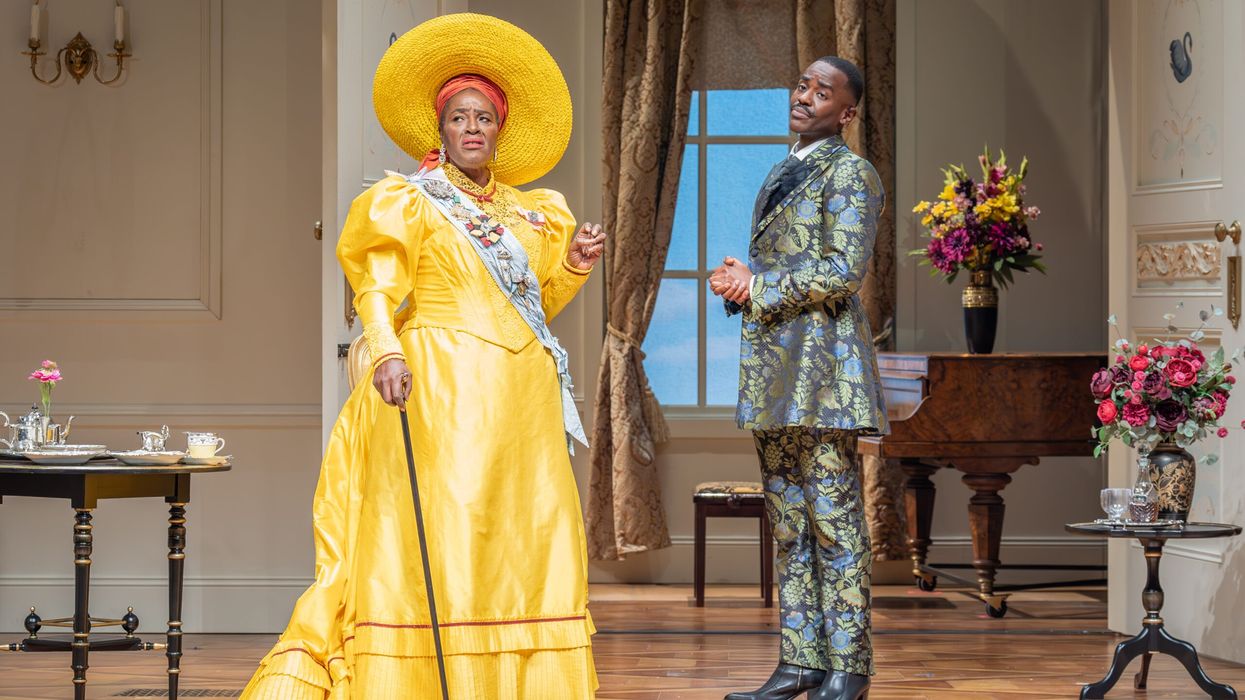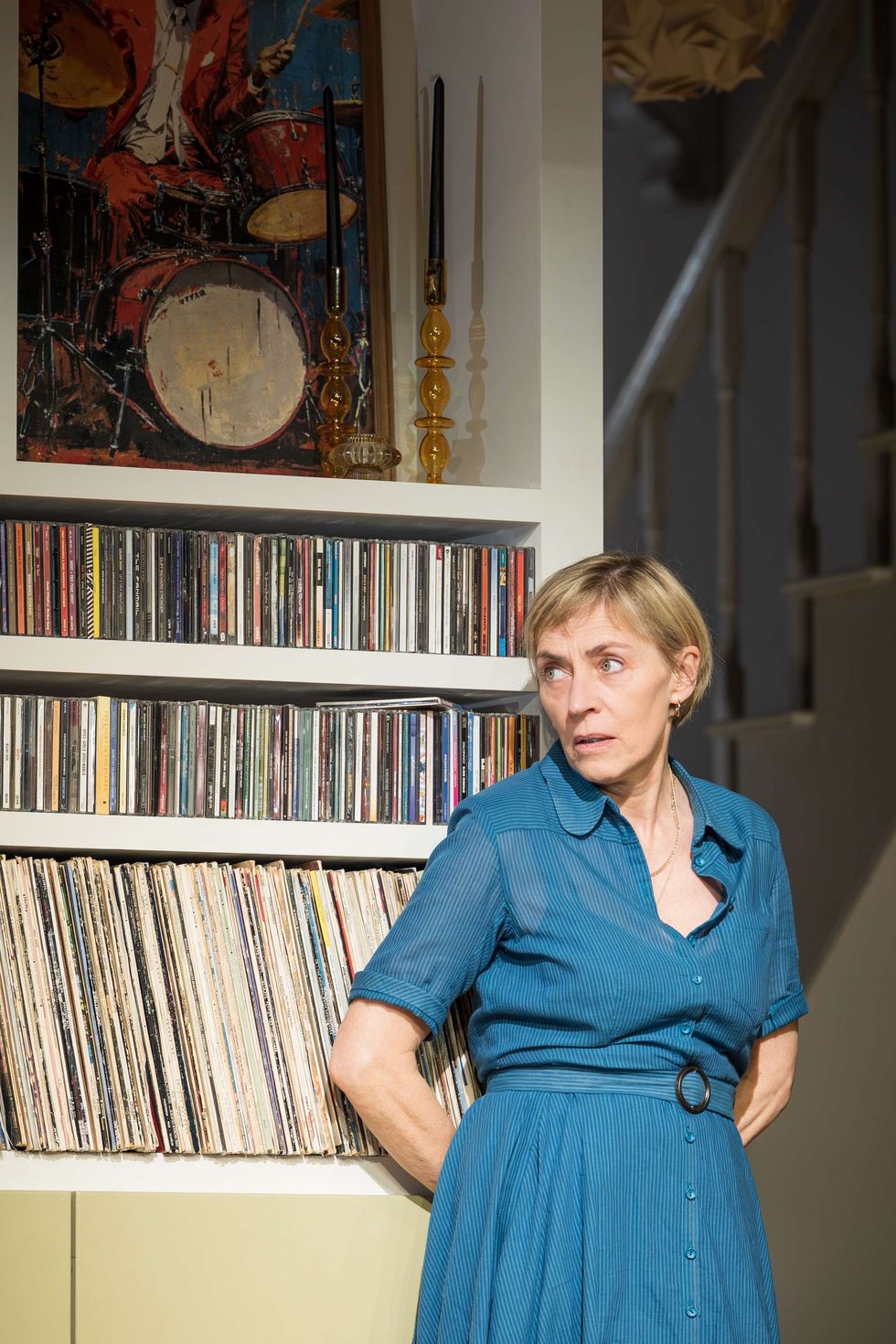THE National Trust intends taking the organisation beyond its 5.5 million members, who are thought to be mainly white and middle class.
Hilary McGrady, director-general and René Olivieri, chairman of the National Trust, made this pledge at a reception held last Tuesday (26) at the Science Museum. They outlined a long-term strategy, set to be announced in January.
A key aim, supported by Eastern Eye, is to encourage more British Asians to visit National Trust properties and join as employees or volunteers.
The trust has drawn up a list of 28 of its “most important houses”, including Kedleston Hall in Derbyshire, home of the Curzon family, and Powis Castle in Wales, which is linked to Robert Clive of India.
Referring to the objects in the Science Museum, McGrady said: “As we are in the place of big ideas, just to cycle back, we have been thinking big thoughts. We’ve taken just over a year to think about what the new strategy for the National Trust needs to be like for the next 10 years. But, in reality, we are thinking way beyond that to 2050 – and beyond.”
She revealed the result of a consultation process: “We asked more than 70,000 people what they wanted, what was important, not just in terms of what the trust would do, but what they thought the nation needed from us. And, my goodness, they told us.
“Climate change is making such a change. ‘You must go further. You must go beyond your boundaries. You must work with more partners to have more impact.’ And that’s what we’re going to do. We’re going to restore nature. We’re going to need everybody else to work with us. Might take us a while, but we will get there.
“The second thing we heard very consistently, was, ‘We love what you do, National Trust. We think it’s amazing, but, actually, we do know you’re probably not reaching everybody. Your charitable purpose says you should be here for the whole of the nation. And, clearly, you’re not really, because fabulous as they are, 5.5 million members, amazing numbers, you’re still not reaching everybody.’”
McGrady set out her plan of action which will impact British Asians: “We are going to take nature, beauty, history to where people are. We’ve been doing quite a lot of that in the last 10 years, but we’re going to do a lot more. And, again, we’re going to work with other people. What does that look like in practice? Well, it looks like working across not just one property, but clusters of places that people can start to take pride in, where heritage really comes to life and enhances the places they live and relax and have leisure. And it seems such an important role for the trust when we’ve got such knowledge and such reach across so many different organisations that we can make a difference in this space.”

As she spoke, McGrady referred to the nearby ‘Clock of the Long Now,’ designed to keep accurate time for 10,000 years.
“Even (Amazon boss) Jeff Bezos has picked on this slightly bonkers idea, apparently,” she said, “but I love the idea of something that has the confidence to take such a long view. Apparently, it was a prototype aimed to be an antidote for all of our short-term thinking. I love that idea of having the audacity and the ambition to think so long term. The National Trust can trump that, because we think about forever, never mind 10,000 years.”
McGrady highlighted three areas of progress, starting with the 125th anniversary of Wicken Fen in Cambridgeshire. ‘It’s one of the UK’s most important nature reserves. We bought the first two acre patch for £10 in 1899, and 125 years later, it’s 1,000 times that size. It is absolutely alive with nature – an extraordinary place. This year, we even had a crane chick, the first in 500 years.”
Standing at four feet, the common crane is Britain’s tallest bird. The chick is from a pair which began breeding in Wicken Fen in 2019.
McGrady added: “Second project, from one of our oldest nature reserves to one of our newest properties. This time last year, I talked about acquiring Munstead Wood, the (Surrey) home of Gertrude Jekyll, that amazing woman who really democratised gardening. She was the woman who made it possible for all of us to create an English country garden. Whether you have a large estate or a little window box, you could make something extraordinary. And we’ve been doing wonderful work, building our understanding of exactly what she did, how she thought, who she worked with.”
She continued: “The third thing, given that we’re in this astonishing place, is all about innovation and science. I’m very proud that we were able to establish an award for art and culture, directly targeted at young people. We called it the time and space awards.”
She said “it was inspired by Sir Isaac Newton’s time at Woolsthorpe to take the time and the space to think about the interface between arts and culture and nature, and honestly, the applications from young people were just astonishing.”
Isaac Newton, born on Christmas Day 1642, spent his childhood at Woolsthorpe Manor in Lincolnshire. Though not interested in farming, he was inspired by growing up surrounded by nature. It’s in the orchard where he apparently saw an apple fall from a tree, leading him eventually to come up with the notion of gravity.
McGrady said she was “especially proud that His Majesty the King this year confirmed that he will continue to be the patron of the National Trust. It felt incredibly important to me, because he’s someone who has sponsored and led and championed nature for so many years, and our cultural heritage, too. It’s a real boost to our work.”
She thanked the National Lottery Heritage Fund for giving £150 million over 30 years to the trust, enabling it to undertake “wonderful projects across the country”.
McGrady, who lives in Northern Ireland, said: “Most recently – and this is close to my heart because it’s on my doorstep – we received £3m for a project in Northern Ireland to extend the green corridor that is across the Belfast Hills from Divis and beyond. It’s going to make an enormous difference to the people that live in the city.”
She mentioned “the story of the Sycamore Gap (in Northumberland National Park), that awful, awful felling of the tree more than a year ago”.
She disclosed: “We gathered those seeds and planted them, and we’ve been growing saplings, and now we are in the process of figuring out who we want to give them to. We’ve been overwhelmed by people wanting to be part of the future of the Sycamore Gap.”
Saplings have gone to the Rob Burrow Centre for Motor Neurone Disease; Blaenavon, a town in one of the highest points in Wales “with a very, very strong history of the Industrial Revolution and now wanting to embrace their green heritage”; and Grow to Know, “a wonderful community gardening project based under the Westway in London”.
“A sapling is more than just a sapling,” McGrady concluded. “It’s a gift into the future. It’s a signal of hope to our future generations that there is something worth going on here. There is a future where nature can thrive, where people can feel proud of the places that they live, where their heritage reflects their history, and the National Trust will be a part and a cog in the middle of that.”
Olivieri also highlighted the significance of the Science Museum as the setting for the gathering.
“Actually, all of our work is informed by science and evidence and this is an inspirational and informational place for us,” the chairman said.
“This place celebrates many light bulb moments, and those are moments when dreams became reality, changing the course of human history,” he said.
An example was the Apollo 10 command module which was just round the corner from where he was speaking. “It’s amazing to think they floated around in space in that little contraption. I was a teenager when NASA launched that dress rehearsal for Neil Armstrong’s ‘one small step for man, one giant leap for mankind,’ and for my generation, the moon landing was a light bulb moment.”
He compared that with the origins of the National Trust in 1895. “This small mutual society was formed to deal with the less glorious unintended consequences of the industrial revolution, namely increasing urbanisation and the accelerating exploitation of our natural world. Today, I’m happy to say that mutual society has grown into a national movement facing some of the greatest challenges of this or any era before.
“We are a key participant, but by no means the only participant in a shared endeavour to hold the decline of nature, to end unequal access to both nature and heritage, and to inspire everyone to care for these things which make our lives both possible and meaningful.
“The National Trust is, as it says on the tin, national in scope and ambition. Our aim is to serve everyone in the UK.”
In one trust property, the Holnicote Estate in Somerset, “we pioneered a new form of river restoration, in effect, resetting the river to what it would have been, what it would have looked like before human intervention. We’re scarcely a year on from that, and already scientists are reporting back from their measurements and saying there’s an explosion of life happening there that’s fantastic. Everywhere in the countryside, we’re trying to bring back birdsong, rare species, restore soils, clean up polluted waters and reduce flooding and erosion. Equally important are the urban areas. We want to bring nature back into people’s daily lives in 100 different towns and cities. Everything we do is about helping nature to help us.”
He talked about the Harwich Open Days Festival which “turns 30 this year and involves communities up and down the country. Thousands of volunteers open doors to unseen places and put on celebrations of local history. In those 30 years, we welcomed over 39 million visitors. The vast majority of these people may be visiting a heritage site for the first time. They’ve come away with a renewed understanding and commitment to their local community, to the places where they live. And that’s why, in future, you will see us do even more beyond our boundaries, off our properties, to bring nature and heritage into communities and to help people experience them on their terms, rather than just on ours.”
Olivieri said: “Now we have plans to make sense of our most remarkable places. And I’m talking here about 28 of our most important houses, which we want to turn into must see cultural destinations.
“Our gardens are ever evolving. We want them to inspire even more people. We know that special historical places provide great enjoyment, and they also help illuminate our complicated present times. In some cases, the first step is literally to turn on the lights, as we’ve done in the Bath Assembly Rooms, where we’ve just finished conserving these huge Georgian chandeliers.
“It’s the first piece in a bigger puzzle bringing this grand building to light and the many stories it has to tell. Right now, we are excited to say we’re working on how to use digital technology to literally bring the very people that strove through those rooms back to life.”
Olivieri said: “I believe we need another moonshot now if we want nature and culture to truly thrive, and not just in a few places, but everywhere and for everyone. This gallery we’re in this evening is called The Making of the Modern World. It celebrates the legacy, the heritage, that we’ve taken on from previous generations.
“I’d like to think that perhaps one day there will be a new gallery in this museum telling the story of what this generation, our generation, what we’ve created. What that legacy will be is up to us, but let’s hope it is one of equal ingenuity, generosity and foresight, and maybe one with fewer internal combustion engines.”
Olivieri is right about “our complicated present times”.
The trust’s 2020 report revealed that 93 of its major properties were built with money made from either the Indian Raj or the slave trade, provoking an angry backlash from right-wing newspapers and commentators. They argue that the trust should confine itself to serving cream teas in beautiful surroundings – and steer clear of exposing the dark history of the locations where the delicious scones are being served.






 A scene from the playMarc Brenner
A scene from the playMarc Brenner Saskia ReevesMarc Brenner
Saskia ReevesMarc Brenner Clive Owen Marc Brenner
Clive Owen Marc Brenner






